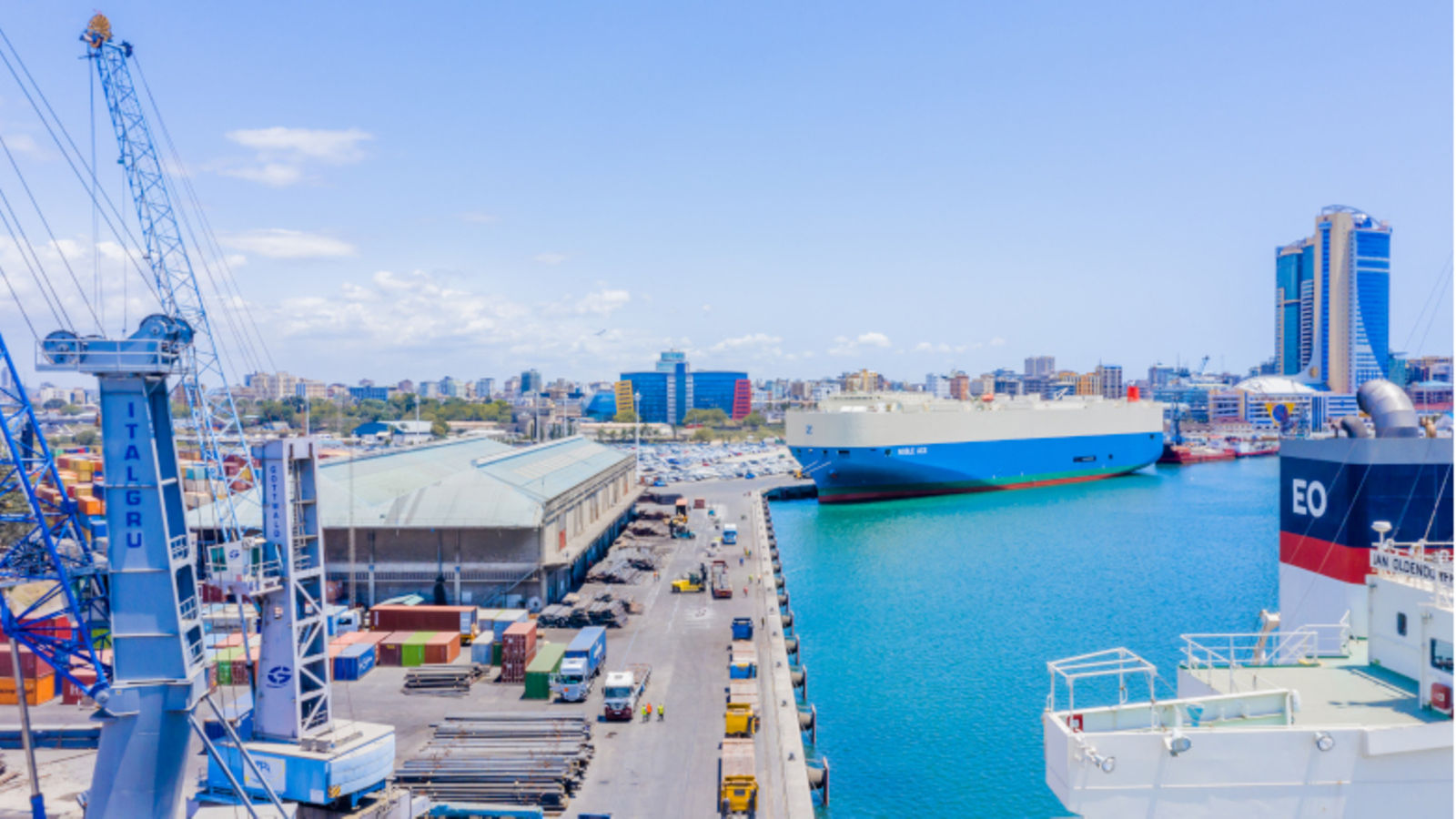
How the latest World Bank port ranking favored Mombasa over Djibouti and Dar
In the most recent World Bank global ports index, Mombasa port outperformed Djibouti and Dar es Salaam, its principal rivals in Eastern Africa, in terms of ship delays and non-tariff obstacles.
As per the recently issued Container Port Performance Index (CPPI) 2023, the port of Djibouti, which is regarded as the maritime hub of the area, saw a sharp decline in its ranking from 26 in 2022 to 379 in 2023 due to growing economic bottlenecks.
Due to inefficiencies, the port of Dar es Salaam fell 55 spots, from 312 to 367.
This year, Addis intensified its search for an alternate corridor for its imports and exports, with an eye toward the Lamu port. Addis, the most populous country in the region, cited rising insecurity in the Red Sea and Non-Tariff Barriers (NTBs) in the Djibouti port as some of the factors.
In an attempt to exploit its Berbera port, Addis approached Somaliland, a self-declared autonomous entity of Somalia. This arrangement caused significant diplomatic strain with Mogadishu, who deemed the agreement to be void. Ethiopia granted Somaliland permission to establish a naval base and commercial port, an action that Mogadishu deemed unlawful, in exchange for the possibility of recognition.
Ethiopian Prime Minister Abiy Ahmed and President Muse Bihi Abdi of Somaliland signed a Memorandum of Understanding on January 2 that was intended to give Ethiopian naval forces access to 20 kilometers of Somaliland coastline for fifty years.
Dr. Abiy promised that the Ethiopian government will conduct a thorough evaluation of Somaliland’s recognition in exchange.
Additionally, Somaliland was given stock in Ethiopian Airlines.
However, once South Sudan concentrated on utilizing the Mombasa port, Mogadishu revoked the agreement, forcing the Ethiopian government to show renewed interest in using the port. This has provided a lifeline for the $25 billion Lamu Port, South Sudan, Ethiopia Transport (Lapsset) corridor.
In an effort to diversify its trade routes and lessen its dependency on ports in Djibouti, Ethiopia received its first shipment of fertilizer through the Lamu port in May of this year. Mombasa dropped two spots to 328 in 2023, while the port of Dar, which has been giving Mombasa a run for its money, also suffered a decline, going from 312 in 2022 to 367 in 2023.
Ethiopian Prime Minister Abiy Ahmed and President Muse Bihi Abdi of Somaliland signed a Memorandum of Understanding on January 2 that was intended to give Ethiopian naval forces access to 20 kilometers of Somaliland coastline for fifty years.
Dr. Abiy promised that the Ethiopian government will conduct a thorough evaluation of Somaliland’s recognition in exchange.
Additionally, Somaliland was given stock in Ethiopian Airlines.
However, once South Sudan concentrated on utilizing the Mombasa port, Mogadishu revoked the agreement, forcing the Ethiopian government to show renewed interest in using the port. This has provided a lifeline for the $25 billion Lamu Port, South Sudan, Ethiopia Transport (Lapsset) corridor.
In an effort to diversify its trade routes and lessen its dependency on ports in Djibouti, Ethiopia received its first shipment of fertilizer through the Lamu port in May of this year. Mombasa dropped two spots to 328 in 2023, while the port of Dar, which has been giving Mombasa a run for its money, also suffered a decline, going from 312 in 2022 to 367 in 2023.
He said that the introduction of new digital technologies and environmentally friendly procedures had cut the days that vessels had to wait to only a few hours, and that continued efforts will increase efficiency and lower operating costs.
International trade
“It is concerning to see some of the ports on the continent declining in terms of efficiency, as this goes against the creation of jobs and serves as a catalyst for economic growth,” Mr. Mbaru stated.
The duration of port stay for container boats is the primary emphasis of the CPPI, which ranks 405 global container ports based on efficiency. “Identifying areas for improvement is its main goal, as stated by the speaker, for the benefit of various parties involved in the global trade system and supply chains, including ports, shipping lines, national governments, and consumers.”
The KPA claims that freight handling at one of the gates to East Africa has significantly improved. The KPA reports that in 2023, container vessel turnaround times dropped from an average of three days in 2022 to two days in 2023.
Furthermore, there was a 10% improvement in the average container dwell time, which was lowered from 3.9 days in 2022 to 3.5 days. Ship turnaround times for large boats decreased from 90.5 hours in 2022 to 64.1 hours in 2023, while ship waiting times for containerized vessels decreased to 0.2 days.
The duration between a ship’s arrival and departure following the completion of cargo exchange is used to calculate port rankings based on efficiency. The World Bank highlights the need of effective port operations for the growth of regional trade and points out notable advancements since 2020, when the pandemic caused a decline in trade.
To guarantee that the rankings are both accurate and statistically robust, the report’s ranking methodology combines an administrative approach that reflects expert judgement with a statistical approach that uses factor analysis.
The Port of Berbera, located in Somaliland, made a notable jump from position 144 to 106 in the report, indicating its increasing importance in the region for efficient cargo processing. The remarkable achievements of Berbera can be ascribed to DP World’s operational takeover in 2017.
Since then, vessel productivity has skyrocketed by 300 percent and cargo quantities have climbed by 35 percent. The container terminal, according to D World, moves between 50 and 75 times per hour, which is a major improvement over the 23.5 moves per hour global average reported by the World Bank.
Tanger Med in Morocco and the port of Mogadishu both exhibited improvements in their rankings during 2022. Tanger Med maintains its position at number three, making it the only African port to rank in the top 10, and the highest ranking African port overall according to the World Bank.
Tanger Med Port, which is run by APM Terminals, handled 8,617,410 TEUs in 2023—a 13.4% increase from 2022. This accomplishment, which represents 95% of the port’s nominal capacity, was completed four years ahead of schedule.
Two of the eight STS double cranes that were ordered and delivered to the port cost €117 million ($125.5 million). With a capacity of 24,000 Teu, the cranes can handle cargo ships with up to 26 containers.
All Categories
Recent Posts
Tags
+13162306000
zoneyetu@yahoo.com



